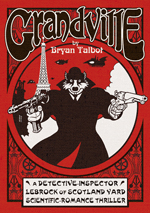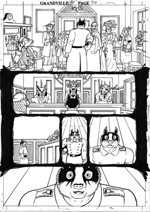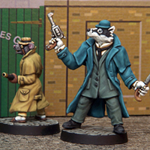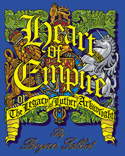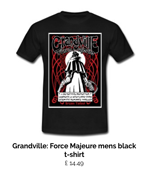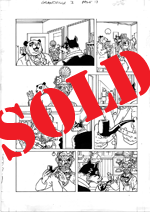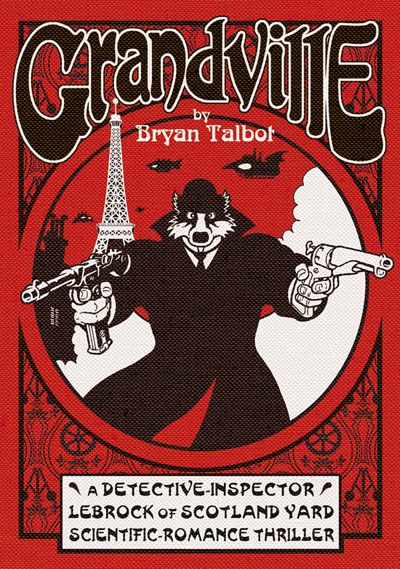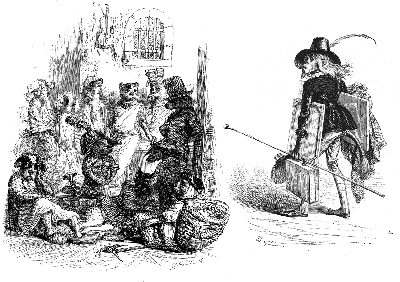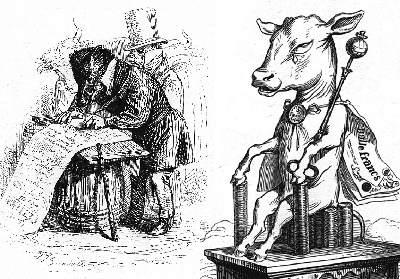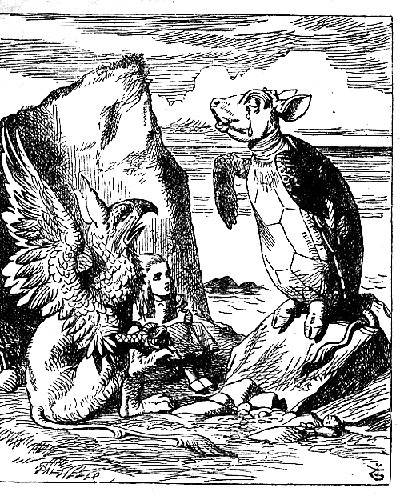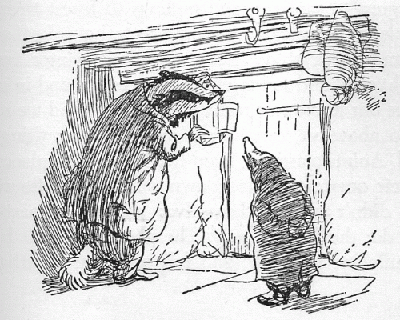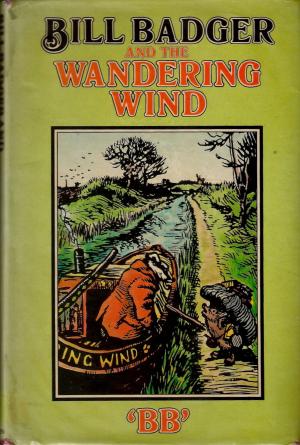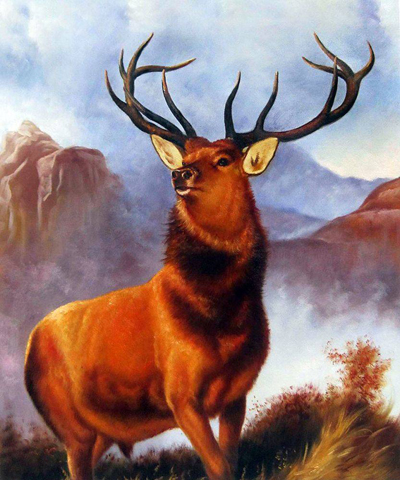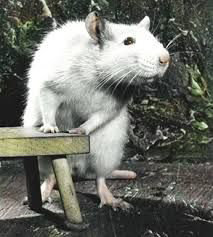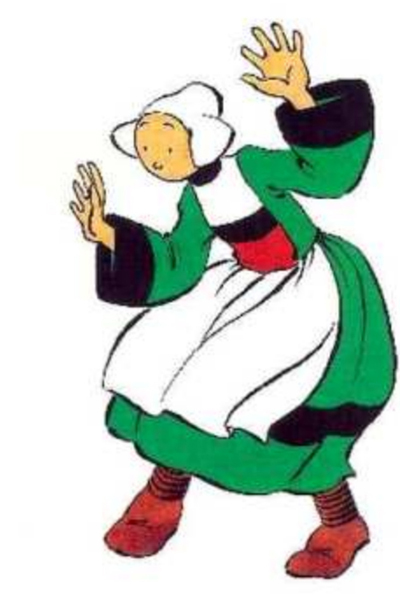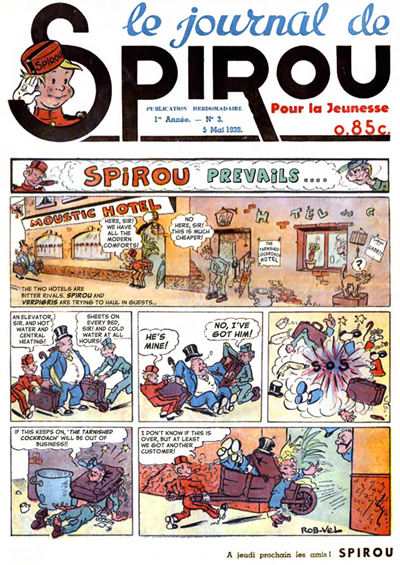Grandville: the Annotations
Welcome to the Grandville Annotations!
This is similar in concept to the Directors Cut of Heart of Empire that Bryan and myself created: it is an attempt to answer the eternal "where do you get your ideas from?" question, and a way to showcase the influences and images that went into the creation of Grandville.
Below are the annotations for the first Grandville. We are publishing updates to this page every Sunday and we will cover the entire Grandville series: we have now published all of the annotations for Grandville Mon Amour and Grandville Bête Noire and we've just started on Grandville Noel.
Start reading the Grandville annotations below, or jump straight to page 2, page 3, page 8, page 11, page 12, page 13, page 14, page 15, page 16, page 17, and page 19.
My graphic novels are usually the result of years of consideration, some taking longer than others. I think, research and make notes, slowly developing the concept until I’m happy with it. The first volume of Grandville was the complete opposite. Directly after finishing Alice in Sunderland, I was tidying away the pile of reference books I’d been using and picked up a book I’d had for decades. It was a book about the early 19th century French illustrator Jean Ignace Isadore Gérard, who was a big influence on John Tenniel, illustrator of Lewis Carroll’s original Alice books. Compare Gérard’s illo of a veal here with Tenniel’s Mock Turtle.
His brilliant cartoons, satirising French social mores, fashions and attitudes, used animals to convey character. He signed the drawings with his nom-de-plume, J.J. Grandville. I had a sudden flash of inspiration: “Grandville” could be the nickname for Paris in a story set in an alternative reality populated by anthropomorphic characters in which Paris is the biggest city in the world.
I’m a big fan of crime fiction and, of course, Sherlock Holmes. I’d not written a detective story since Brainstorm Comix’s Amazing Rock and Roll Adventures in 1977, and the idea to write another, in this fantasy setting, really grabbed my imagination. I’d never done an anthropomorphic comic before, so jumped at the challenge. I moved the time period forward, to a steampunk Belle Époque – an incredible time, for many reasons.
With every one of my books, including the other 4 Grandville volumes, I usually spend a lot of time working on the structure before I type a word. With this book, after spending a week thinking about it, while working on the artwork for my experimental graphic novel Metronome (2008, now available for next-to-nothing from Sequential), I sat at the computer, scribbled down the plot in ten minutes and typed the whole script over the next 5 or 6 days. The characters arrived fully-formed and even delivered their own lines. It was like taking dictation. For all my previous comics, I made meticulous thumbnail sketches of each page before starting the scripts. This time, I didn’t need them, as I could vividly visualise each page, something I’ve done ever since. Creating a graphic novel is a long slog, and anything that can save time is a bonus.
So, yes, this first book virtually wrote itself. I did fine-tune the text as I worked on the art, but it’s not very far from the first draft.
Why did I make LeBrock a badger? See page 12 annotations.
The Eiffel Tower is a great device. Stick it in a picture and there’s no need to label it “Paris”. The same goes for Big Ben and London.
Apart from the regular scene-setting intro that appears in each volume, usually after the title page following the prologue, there are no text boxes in Grandville. Neither are there thought bubbles or sound effects, apart from the occasional “click” when Roderick cocks the trigger of his cane gun, which appears in a rectangular balloon. I originally meant to use FX in Grandville but, while writing this first volume, I realised that they would look ludicrous, especially in the action sequence near the end, which would have consisted of page after page of “Boom Bang Ratatattat blam”.
While writing it, I assumed that it would be a one-off graphic novel but, by the time I was finishing the artwork, I was hooked.
Page 2
I thought a carriage ratting across cobbles at high speed was a really cool way to start, until the first Robert Downey Junior Sherlock Holmes film was released three months after the book was published, which starts with… a carriage rattling across cobbles at high speed.
Believe me, it’s a lot easier typing “the assassins are wearing piston-driven steam powered wheelie boots” than designing and drawing them. These were inspired by this real 19th century concept that never caught on.
Page 3.
There’s a reason the lead assassin is a fox. See page 38.
Page 8
Panel 1
“Name of a dog!” Extremely old-fashioned French expletive: “Nom d’un chien!”
Panel 2
There are many outrageous puns in the Grandville books. This is the first: (Raymond) Leigh-Otter (Ray Liotta).
Page 11
From age 5 onwards, the Christmas present from my dad every year was the new Rupert the Bear annual, written and drawn by Alfred E Bestall, and Rupert has an obvious influence on Grandville. This village is Nutwood, and the house across the road is Rupert’s home. This was the setting in all his stories, it’s from this house that he sets out on all his fantastic adventures. You can see his dad here mowing the lawn. Bestall based Nutwood on Betws-y-Coed, the Welsh village where he had a holiday cottage and to where he later retired.
Rupert’s pal Algy appears as a detective in Grandville Force Majeure.
Page 12
This picture of LeBrock never appeared in any of the books (except on the cover of the first Italian edition). It was done to accompany the story proposal that I sent to my editor, Dan Franklin of Jonathan Cape, to demonstrate the illustration style I intended to use. One of my claims to fame is that I have the same editor as Salman Rushdie!
LeBrock: “Brock" is, of course, an Old English name for badger.
The Rupert books had a large cast of characters, and one of his many friends was Bill Badger, who I always thought looked the coolest. Probably something to do with the black and white facial colouring, which looks a little like a mask. He’s one of the reasons that LeBrock is a badger.
I wanted a protagonist who, apart from having the deductive abilities of Sherlock Holmes, was tenacious in the extreme, and who could, at times, be ferocious. The last two attributes definitely say “badger” to me.
Badger is the most capable character in The Wind in the Willows, another big influence on Grandville. He’s the big guy who sorts everything out.
I also wanted a working-class character, and badgers are earthy, no-nonsense types and seem to suit the role, as in this illustration from a 1930s card game of Woodland Happy Families and as the eponymous hero of the series of 1960s children’s books by “BB”, Bill Badger.
Bill does seem to appear frequently as a badger name in fiction. Another example is Billy Brock’s Schooldays here, a strip from the 1950s children’s comic Playhour. This is why LeBrock’s paramour, from volume two onwards, is named “Billie”. For more on her name, see the annotations for Grandville Mon Amour.
For anybody interested in the subject of badgers, I heartily recommend the excellent Badgerlands by Patrick Barkham.
Page 13
Panel 5: “Nutkin”: Beatrix Potter’s The Tale of Squirrel Nutkin.
Page 14
Panel 1
The painting in the background is Monarch of the Glen by Edwin Landseer, an extremely popular painting in Victorian times. He’s the guy who designed the lions in Trafalgar Square.
Panel 3
Roderick Ratzi was inspired by Dorothy Sayer’s aristocratic detective Lord Peter Wimsy, PG Wodehouse’s Bertie Wooster and Kenneth Graham’s Ratty, from The Wind in the Willows. He’s named after Roderick Rat, one of the leading protagonists of the long-running children’s TV show, Tales of the Riverbank, which featured real animals.
Page 15
Panel 4 & 5
Rupert Bear’s dad, wearing his customary plus-fours, clearly visible in the background.
Page 16
Panel 3
The station sign: Nutwood
Ah, Old Pappa Ratzi! Sorry, another pun: paparazzi
We eventually see Papa Ratzi in Grandville Noël. It was James (your 'umble fanpage webmaster!) who suggested that he should be a keen photographer! This, and his Italian ancestry came in very handy when designing LeBrock’s elaborate set-up in Grandville: Force Majeure.
Panel 4
The readers are suddenly made aware that they have been listening to French! Napoleon and the French regime have obviously supressed the English language over the last 200 years and French is now the official language of Britain. Throughout the Grandville books, all signs, posters etc are in French. In panel 2, the exit is labelled “sortie” and in panel 3, you can just make out the famous 1908 “Skegness is so Bracing” poster by John Hassall, except here it says “Skegness est tellement vivifiant”! The poster reappears on page 22, panel 1 of Grandville Force Majeure.
Page 17
Panel 1
The text box, setting the scene, appears in all the books, slightly modified as time moves on. I always send comic pages to the publisher with any text and speech balloons on a separate layer, so it’s easier for foreign publishers to accommodate translations. For some reason, the text box layer was missed off the first Cape edition of Grandville Mon Amour.
In the 1970s, there were plans and architect’s designs drawn up for a channel bridge that never came to anything. They included a large area in the centre, a sort of artificial island, for duty-free shops, restaurants etc. I saw the designs at the time in a Sunday newspaper colour supplement, though I’ve never been able to find them since.
The bridge design is loosely modelled on the Pont Neuf in Paris.
Panel 2
The carriage, and the two ostrich ladies are a reference to Augustus Egg’s The Travelling Companions, a popular Victorian painting.
It was also referenced by John Tenniel in Alice Through the Looking Glass, after he saw it at the annual exhibition of the Royal Academy.
Page 19
Panel 1
Hotel Marianne: Marianne is, of course, a symbol of France, the Goddess of Liberty (see also Page 47). I portrayed her with a chicken’s head in reference to another symbol of France, the cock.
Panel 2
The maid is Becassine, probably the first female comic strip protagonist and the first example of modern bande dessiné, published from 1905 and drawn by Joseph Pinchon. The strip’s ligne claire style was a big influence on Hergé. She’s still around today, in various forms.
Panel 3
The painting is of Napoleon Crossing the Alps by Jacques-Louis David, with an added lion’s head!
Panel 4
The bellboy is a reference to Spirou, the extremely popular French BD character, created by Robert Velmer in 1938, since drawn by other artists such as André Franquin.
His line here “I arrive” is a literal translation of “J’arrive!” (“I’m coming”).
Next is Grandville Annotations part 2, covering pages 21 to 40.

